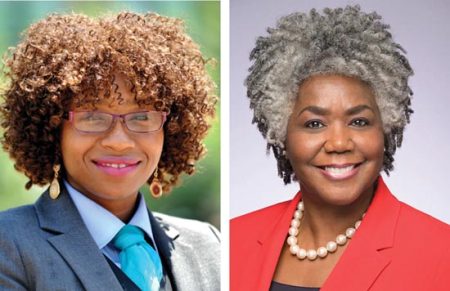Getting to Diversity, Inclusion, and Cultural Competence in Multicultural Environments

by Don C. Locke
Why “getting to?” Every organization is dynamic in terms of diversity and inclusion. Every organization is in the process of becoming diverse and inclusive. If we really believe in the importance of all people and groups, then every organization has room to improve.
Don C. Locke is a Distinguished Professor Emeritus, NC State University.
What does a diverse organization look like? An organization can be
described as diverse if it has persons from different
racial/ethnic/gender/economic groups among its staff and clients.
What does an inclusive organization look like? An organization may be
described as inclusive when it has persons from different racial,
ethnic, gender, and/or economic groups among its staff and clients in
numbers that are relatively consistent with the general population, and
who participate in all aspects of the organization.
 The term “diversity” has come to refer to any number of issues and
The term “diversity” has come to refer to any number of issues and
concerns. Diversity does not mean the same thing to all people, and
application of diversity criteria depends on circumstances within the
organization.
The diversity literature reports the lack of a standard definition for
diversity. This weakness leads us to believe that diversity has no real
meaning. Diversity sometimes refers to the collective mixture of human
differences and similarities along a given dimension.
Dimensions of diversity among organizational members include race,
culture, religion, gender, sexual preference, age, profession,
organizational or team tenure, personality type, functional background,
education level, political party, and other demographic, socioeconomic,
and psychographic characteristics.
While diversity is defined in broad terms that include a variety of
factors, in the context of most American organizations and institutions,
race, ethnicity, and sex are among the most salient demographic
variables.
Inclusion in organizations is seen as a “business issue,” meaning that
having different people in the organization contributes to its success;
members of the organization view difference as an asset. The business
case for diversity links program initiatives to the organization’s
financial bottom line. Inclusion is seen as a proactive tool to benefit
all members of the organization, by recognizing and utilizing individual
differences in working and learning styles.
Affirmative action and equal employment law emerged at the height of
the civil rights movement to rectify past discrimination and preclude
future discrimination in employment. A model to address diversity that
was different from equal employment and affirmative action emerged in
the late 1980s and gained momentum in the 1990s. This model was called
“valuing diversity.”
Valuing diversity prefigured diversity management and grew out of early
efforts to end discrimination. Valuing diversity focused on bridging
gaps in respect and understanding that existed among different cultural
groups and on creating an atmosphere of increased comfort, empathy, and
common ground for all members of organizations.
In order to value diversity, organizations must assure that they are
truly diverse and inclusive at every level. Without a specific plan
focused on hiring, training, and promoting underrepresented groups –
staff and clients – many organizations will fall short of this goal.
While some organizations may be committed to diversity programs that
are broad in scope, dwindling budgets and taxpayers’ demands for less
government and more services prevent organizations from expending large
sums of money on these efforts.
Culture refers to integrated patterns of human behavior that include
the language, thoughts, communications, actions, customs, beliefs,
values, and institutions of racial, ethnic, religious, or social groups.
Competence implies having the capacity to function effectively as an
individual and an organization within the context of the cultural
beliefs, behaviors, and needs presented by consumers and their
communities.
Cultural competence is defined as a set of congruent behaviors,
attitudes, and policies that come together in a system, agency, or among
professionals and enables that system, agency, or those professionals
to work effectively in cross-cultural situations.
Operationally defined, cultural competence is the integration and
transformation of knowledge about individuals and groups of people into
specific standards, policies, practices, and attitudes used in
appropriate cultural settings to increase the quality of services;
thereby producing better outcomes.








